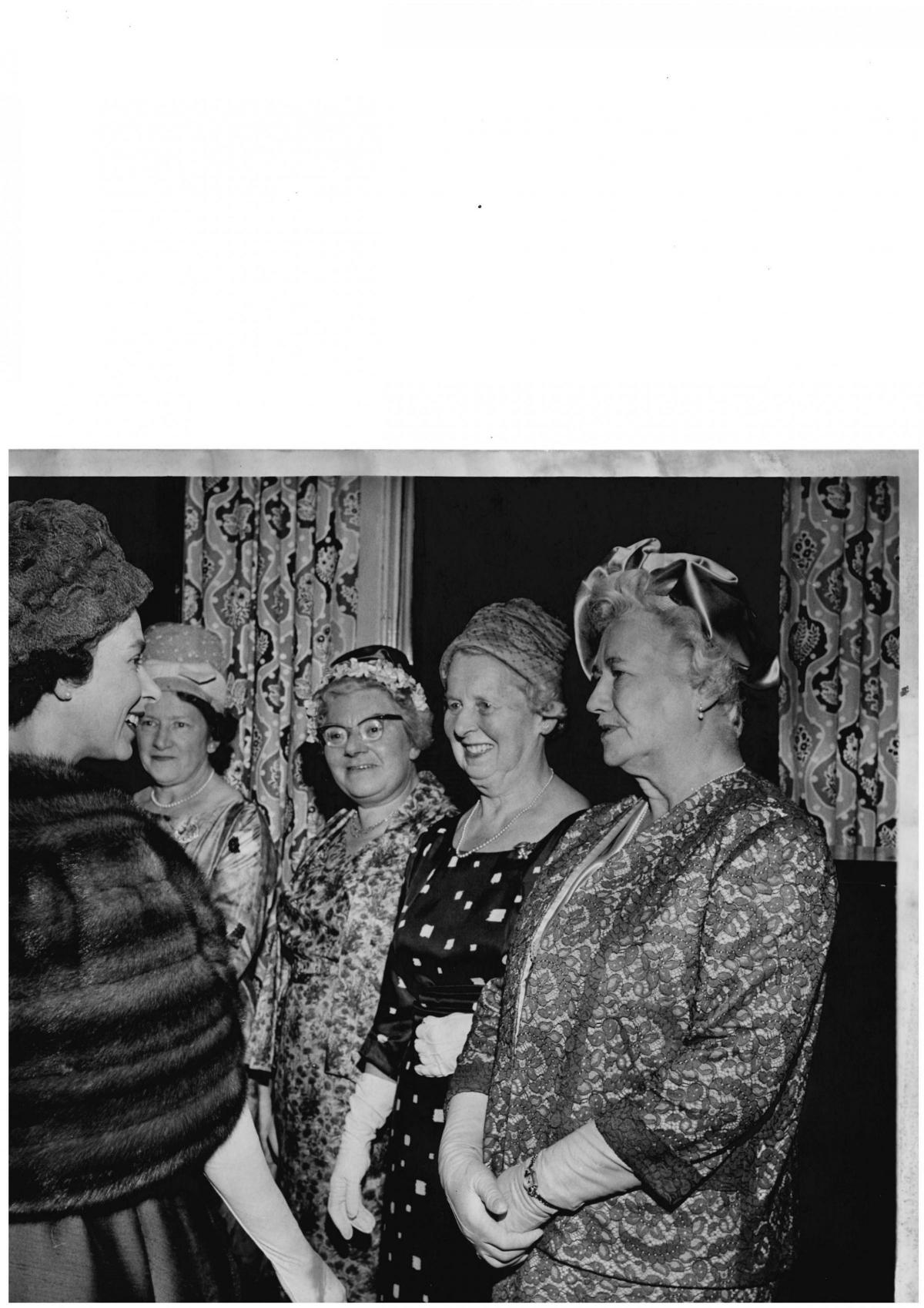ON the evening of Saturday, July 1, 1961, several thousand people gathered in the forecourt of the Palace of Holyroodhouse, with many others crowded onto the slopes of the adjoining Holyrood Park, to watch a special show put on for the Queen and the Duke of Edinburgh.
The display included the military bands of the Royal Horse Guards (the Blues), the Royal Scots Greys (2nd Dragoons), the King’s Own Scottish Borderers, the RAF Regiment, and the massed pipe bands of Edinburgh City Police and Edinburgh T.A. battalions.
Displays of dancing were given by the Royal Scottish Country Dance Society (RSCDS) and members of the Scottish International Highland Dance team; the community singing was led by a choir of 800 school pupils and representatives of other city choirs.
At the end the Queen, wearing a white mink stole over a royal-blue silk evening gown, stepped into the forecourt and was introduced to several of the Scottish country dancers (main image).
A few days earlier the Queen and the Duke had been entertained at the Coates Crescent headquarters of the RSCDS.
The gardens opposite were thronged with sightseers as the royals were greeted by the Countess of Elgin, the society’s president. Inside, they were introduced to several branch members (above).
A reel, a strathspey and a jig – ‘Captain McBride’s Hornpipe’, ‘Up in the Air’, and ‘Miss Mary Douglas’ – were danced for the royal couple, performed by eight dancers drawn from across Scotland.
The Duke asked what had happened about “our own” dance, ‘T he Duke and Duchess of Edinburgh’.
Miss J.C. Milligan, the society’s chairman and co-founder, told him that the society collected and performed traditional dances; the dance in question was a popular one, and was itself likely to become traditional.
A Morocco-bound folder of gramophone records of Scottish country dance music was presented to the Queen as a souvenir of her visit.
The trip to the RSCDS had been preceded by a lunch at the Assembly Rooms, on George Street, described by the Glasgow Herald in these terms: “Probably not since 1822, when Sir Walter Scott stage-managed the reception which George IV attended in the Assembly Rooms in Edinburgh has there been a Scottish occasion comparable with that which the Queen and the Duke of Edinburgh attended yesterday in the same rooms as the guests of the Standing Council of Scottish Chiefs.
“It is believed to have been the first occasion which a Sovereign has graced in person a gathering of the acknowledged chiefs of Scotland, both Highland and lowland, and possibly the first on which the Royal Standard has flown above the Assembly Rooms”.
Read more: Herald Diary






Why are you making commenting on The Herald only available to subscribers?
It should have been a safe space for informed debate, somewhere for readers to discuss issues around the biggest stories of the day, but all too often the below the line comments on most websites have become bogged down by off-topic discussions and abuse.
heraldscotland.com is tackling this problem by allowing only subscribers to comment.
We are doing this to improve the experience for our loyal readers and we believe it will reduce the ability of trolls and troublemakers, who occasionally find their way onto our site, to abuse our journalists and readers. We also hope it will help the comments section fulfil its promise as a part of Scotland's conversation with itself.
We are lucky at The Herald. We are read by an informed, educated readership who can add their knowledge and insights to our stories.
That is invaluable.
We are making the subscriber-only change to support our valued readers, who tell us they don't want the site cluttered up with irrelevant comments, untruths and abuse.
In the past, the journalist’s job was to collect and distribute information to the audience. Technology means that readers can shape a discussion. We look forward to hearing from you on heraldscotland.com
Comments & Moderation
Readers’ comments: You are personally liable for the content of any comments you upload to this website, so please act responsibly. We do not pre-moderate or monitor readers’ comments appearing on our websites, but we do post-moderate in response to complaints we receive or otherwise when a potential problem comes to our attention. You can make a complaint by using the ‘report this post’ link . We may then apply our discretion under the user terms to amend or delete comments.
Post moderation is undertaken full-time 9am-6pm on weekdays, and on a part-time basis outwith those hours.
Read the rules here